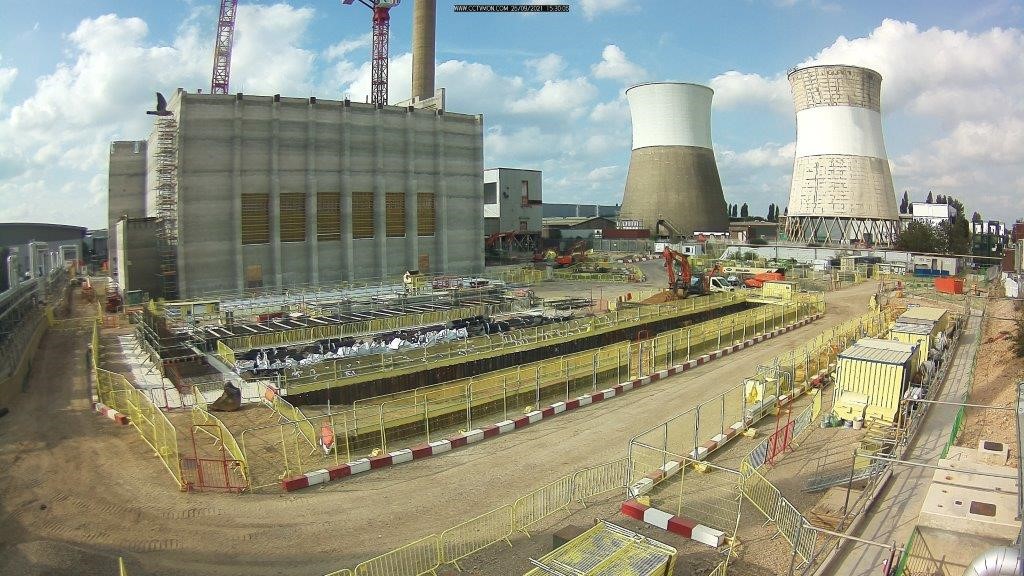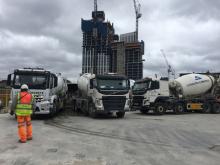
The pour was carried out for SSE and joint venture partner CIP as part of the new Slough Multifuel energy-from-waste (EfW) project.
Together with principal contractor Hitachi Zosen Inova and specialist civils contractor Careys, work on the construction of the new £400m EfW facility, located within Slough Trading Estate, began earlier this year and will be fully operational by 2024.
It will provide a more sustainable waste management solution for the Greater London area, by processing 480,000 tons of residual waste per annum, and will contribute to the UK government’s strategy to reduce landfill and export of waste.
By utilising residual waste as a renewable energy source, Slough Multifuel will offset more than 147,000 tons of CO2 per year and power more than 100,000 homes.
London Concrete says the project is bringing hundreds of local jobs to the area during construction as well as around 50 permanent jobs in the operations phase.
Construction of the main waste bunker at the new facility commenced earlier this year. London Concrete was brought in to assist the civils contractors Careys and GB Slipform in the delivery of a 24/7 concrete supply, with Aggregate Industries’ low carbon concrete, ECOPact Prime, specified to deliver the workability performance needed for a slipform of this size whilst meeting the challenge set to reduce the embodied carbon of concrete.
London Concrete says the immense size of the bunker posed a significant challenge, taking seven days and nights to complete. Furthermore, use of ECOPact Prime, an engineered low carbon concrete that utilises higher blends of cement substitutes such as GGBS, presented challenges for slipforming when it came to setting times and compressive strengths.
Jamie Hamill, contracts manager at Careys, said that his company needed to carry out a number of samples of the different types of concrete mixes to make sure it got the right consistency and strength gain.
"We knew if the concrete went off too quickly in the shutter, then there would be little time to pour it correctly, there would be risks of blockages in the pumps, the rig would need to slide quicker to keep up and everyone would become under increasing pressure to work faster," Hamill added. "This, we knew, would risk a poor finish, or the quality being jeopardised.
“On a big slide like this, you need to be slow and steady, so that you are always under control. The flipside is, however, if the concrete takes too long to go off, it is difficult to speed it up, which has a knock-on effect on the project time and cost. Getting the concrete right is not an exact science as there are lots of different factors that can affect its strength, hence why testing samples in a relative sample size to determine how quickly we wanted the concrete to set was so important on this project. We did this over a few weeks, and we got the correct strength.”
Daniel King, managing director for London Concrete, added: “The project brief was certainly interesting! An eight-day continuous pour using a low carbon concrete that, by design, with its high GGBS content, is not typically used in slipform construction. However, trials carried out over a two-week period at our Heathrow plant, followed by frequent batch testing and 24/7 supervision during the pour, ensured we could supply a mix design that was optimised for performance while also maintaining the sustainability credentials of the build through use of a low carbon concrete.
"Overall, we were able to deliver a total carbon reduction of 42%, a saving of 608,951kg or 609 tonnes of eCO2 in comparison to a standard slipform mix.”









